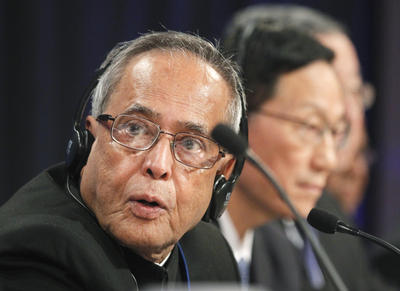From the beginning of its economic modernisaton, China benefited from favourable conditions including a large domestic market, low-cost productive labour and the geographical advantage of its proximity to Japan, the previous engine of Asian growth. Even more importantly, China pursued a swift and coordinated economic liberalisation program beginning in 1978 that served as a catalyst for subsequent decades of economic growth. This reform program included an open-door policy toward foreign direct investment (FDI), promotion of technology transfer through FDI, steady liberalisation of a controlled import regime, competitive exchange rate management, and a strategic approach to free trade agreements (FTAs) with neighbouring Asian economies. Firms operating in China now enjoy a more competitive business environment than their counterparts in India, with more market-friendly rules for business start-up, property registration, contract enforcement and bankruptcy.
Consequently, Chinese exports ballooned to US$1.8 trillion in 2010 from less than US$10 billion in 1985, and now account for 11 per cent of world exports. Meanwhile, Indian exports, which were also less than US$10 billion in 1985, have grown more modestly to US$326 billion in 2010 and account for 2 per cent of world exports. India’s economic liberalisation did not begin until 1991 and even then it focused more narrowly on easing restrictions on FDI and imports, which perhaps helps explain these figures.
Amid this boom, China has moved away from a heavy reliance on resource-based and low-technology exports to become a growing supplier of the world’s high-tech manufactures like electronic and electrical products, aircraft, precision instruments and pharmaceuticals. China accounted for 14.3 per cent of the world’s high-tech exports in 2008, up from only 0.1 per cent in 1985. India’s export of manufactures has also increased since 1985, although it failed to gain nearly as much of the global market share as China — less than 2 per cent against China’s 11 per cent. But Indian exports are increasingly led by more sophisticated, skill-intensive services such as information technology, business process outsourcing and financial services. In each of these areas, Indian exporters account for more than 4 per cent of the global market, compared with Chinese shares of less than 2 per cent.
China is also integrating its economy with those of neighbouring ASEAN countries through an FTA that has begun to reduce or eliminate tariffs on trade in goods (2005), trade in services (2007), and investment (date of implementation currently under negotiation). And Beijing now wants a proposed Shanghai Cooperation Organization FTA to facilitate access to raw materials and energy supplies. India, too, has pursued the use of FTAs to expand trade regionally and globally, though its initial strategy focused mainly on expanding South–South trade, possibly at the expense of maximising the efficiency gains from free trade. More recently, India moved to expand market access to major developed countries and East Asia. With the prospect of slower growth in major industrial economies, closer India-East Asia economic relations could bring mutually beneficial gains and prosperity in the future.
Looking ahead, India’s working age population is expected to grow by an astonishing 136 million over the next 10 years, whereas China will experience a relatively modest addition of 23 million new workers. Such a significant increase in the working age population could prove a mixed blessing for India. Its literacy rate of 63 per cent, compared with a rate of 93 per cent in China, suggests that the country may face an imbalance of low-skilled and high-skilled workers just as the economy’s knowledge sector is poised for continued rapid expansion. Estimates by McKinsey & Company suggest that in order to keep pace with its rapidly growing urban population India will need to spend US$1.2 trillion on urban infrastructure over the next 20 years, or eight times its current rate of spending.
Both Asian giants have established a solid foundation for continued rapid economic growth in the years ahead. Growth in both countries will be driven by exports that comprise increasing amounts of medium- and high-tech manufactures, as well as services. But China’s commercial policies, investment climate and economic conditions remain more favourable than India’s. As a result, China is likely to remain the more rapidly growing of the two in the decade ahead. But many challenges, which could include unexpected internal events, external demand shocks, protectionism or macroeconomic issues to name a few, are likely impinge on China and India in the next decade. How each giant tackles these issues will ultimately determine their growth and trade performance.
Dr Ganeshan Wignaraja is Principal Economist at the Office of Regional Economic Integration, Asian Development Bank.
For an in-depth analysis, see Ganeshan Wignaraja (2011), ‘Economic Reforms, Regionalism and Exports: Comparing China and India’, East-West Center, Policy Studies No 60.


An outstanding analysis by Dr Wignaraja. The note on India’s literacy rate is prescient; improving this should be a high priority for the government to ensure its growing population is able to contribute to its economic growth.